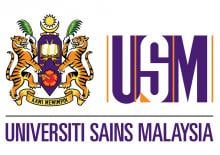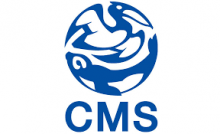Science
News

01 Mar 2006
Universiti Sains Malaysia’s researchers won 18 medals at the recent Malaysia Technology Expo 2006. They won 2 golds, 9 silvers and 7 bronzes. The team also received two special awards for Best Design and Most Creative Booth.

28 Feb 2006
Nature Publishing Group (NPG) and the Australasian Society for Immunology (ASI) today announce an agreement for NPG to publish in partnership with the Society its flagship journal, Immunology and Cell Biology, from January 2007.

22 Feb 2006
The tree frogs of the genera Polypedates and Rhacophorus are new to science and were discovered by researchers on two mountains in Borneo (Gunung Murud and Gunung Gading) (Pictures attached)

21 Feb 2006
While some media are still portraying birds as the main vectors of the spread of avian flu, the UNEP with its associated CMS and the AEWA are launching a campaign to remind the world that migrations are essential to natural processes for the effective functioning of our ecosystems.

21 Feb 2006
Previous studies have shown a correlation between childhood obesity and adult asthma but here the authors show for the first time an additional link to depression alongside the other conditions.

19 Feb 2006
Two scientific officer positions are available to work on a Wellcome Trust-funded 3-year research project on molecular epidemiological and population genetic studies on knowlesi malaria

19 Feb 2006
An image-based 360° panorama and turnorama (object movie) “browser” had been developed for networked mobile devices deployed in collaborative virtual environments (CVEs).

19 Feb 2006
A new model that explains why cooling sometimes causes liquid molecules to
form disordered glasses rather than ordered crystals; The hunger-signaling gut hormone ghrelin can increase the number of nerve connections in a region of the brain crucial for the formation of new memories

16 Feb 2006
This commercial timber tree species has been identified as a fast growing indigenous species suitable for planting in hilly areas. The development of in vitro regeneration systems will immensely speed up production of plantlets to meet current demands on improved planting materials for re-forestation, tree plantation and tree improvement programmes

15 Feb 2006
Broken Genius: The rise and fall of William Shockley, Creator of the electronic age; Bones, Rocks & Stars: The science of when things happened; The Whole Story: Alternative medicine on trial?; Climate Change Begins at Home: Life on the two-way street of global warming; The Science of the Hitchhiker's Guide to the Galaxy

15 Feb 2006
Satellite and aerial images used by Google Earth are changing the way we respond to disasters. A Commentary in this week's Nature looks at the very different responses to Hurricane Katrina and the Pakistan earthquake. It asks whether opening such operations to the wider public could allow image updates in real time in disaster situations.

15 Feb 2006
Now you see it, now you don't; Monkey brains weigh up good and bad; Continental-scale river flow increases as plants sweat less; Near-Sun origin of iron meteorites; Bottom's up to gene control; Inbreeding prophylactic exposed; Ionic liquids are a gas; Uncoiling snake evolution; Invading cane toads make long-legged leap into new territory

12 Feb 2006
This discovery might help to explain why we learn tasks better if there are breaks in between repetitions, why hyperactivity might cause learning problems and why simply being awake but resting can help learning.

10 Feb 2006
The more times we have walked a route, the longer we judge it to be, a UK researcher has confirmed. His studies could help explain why daily commutes can grow to seem interminably long, he tells [email protected].

09 Feb 2006
Pakistan Journal of Biotechnology is published biannually by institute of Biotechnology and genetic engineering, University of Sindh, Jamshoro, Pakistan.

08 Feb 2006
Fossil hunters in China have uncovered the most primitive member of the group that went on to include the fearsome Tyrannosaurus rex; The massive eruption of the volcano Krakatoa in 1883 substantially reduced
sea-level rise and ocean warming well into the following century.

08 Feb 2006
Snow makes forests better carbon sponges; Sympatric speciation finally seen in action; Rusty revelations; A narrow shave for silicon; Hyperactive sperm undressed; Gamma glow in Milky Way's heart reveals cosmic ray battering;

07 Feb 2006
Obesity in Childhood; Vaccines for the Prevention of Diarrhoea; Data for Decision-making; Environment and Health; Malnutrition and Response to Feeding; Infant and Young Child Feeding; Child Health; Severe Malnutrition in the Community; Optimizing Management of Diarrhoea and Anaemia; Combating Micronutrient Malnutrition; HIV Infection and Nutrition;

07 Feb 2006
DIARRHOEAL DISEASES III; MICRONUTRIENTS, VITAMINS, AND DIETARY INTAKE III; BREASTFEEDING AND INFANT HEALTH III; NUTRITIONAL PROBLEMS, GROWTH, AND DEVELOPMENT III; HEALTH POLICY AND OTHER CHILDHOOD PROBLEMS III

07 Feb 2006
In an article in Nature Reviews Genetics, published online this week, an expert lends a helping hand by listing the best online sites for genetic education that will help inform everyone from scientists to complete novices.

06 Feb 2006
DIARRHOEAL DISEASES II; MICRONUTRIENTS, VITAMINS, AND DIETARY INTAKE II; BREASTFEEDING AND INFANT HEALTH II; NUTRITIONAL PROBLEMS, GROWTH, AND DEVELOPMENT II; HEALTH POLICY AND OTHER CHILDHOOD PROBLEMS II

06 Feb 2006
Rotavirus Vaccine; Newborn Care; Coeliac Disease in Children; Obesity in the Developing World; Insights into Diarrhoea; Liver Diseases in Children; Liver Transplantation in the Developing World; Hepatitis C in Children; Inflammatory Bowel Disease in Asians; Community-based Care; Parasites, Diarrhoea, and Atopy; Health Systems for Better Childcare

05 Feb 2006
Maternal under-nutrition and low birth-weight are highly prevalent in developing countries. Many countries have nutritional supplementation programmes during pregnancy to improve the situation. However, the impact of prenatal supplementations on infants’ developmental outcome has not been adequately studied.

05 Feb 2006
An estimated 42,000 children are blind in Bangladesh, and 32% of them are blind from preventable causes, such as vitamin A deficiency mostly following diarrhoea and measles.

05 Feb 2006
Simple behavioural change interventions may reduce early hospital deaths among children admitted with severe malnutrition but do not reduce case fatality.

05 Feb 2006
Endoscopic nodular antritis in children is described to have a high correlation with Helicobater pylori infection.
The study was carried out to investigate the accuracy of using antral nodularity as a marker for H. pylori infection in children.

05 Feb 2006
Increasing antibiotic resistance has emerged as a major challenge in the treatment of shigellosis as multi-drug-resistant Shigellae are being increasingly reported. 47% of patients either did not respond or responded partially to fluoroquinolones. Due to indiscriminate use they will soon be ineffective in the region for treating shigellosis.

05 Feb 2006
The study has shown that the home-made complementary feeding preparation with high energy density is more effective in improving the weight gain of infants than conventional weaning foods.

05 Feb 2006
Sessions include Diarrhoel diseases I; Micronutrients, Vitamins and Dietary Intake I; Breastfeeding and Infant Health I; Nutritional Problems, Growth, and Development I; Health Policy and Other Childhood Problems I;

05 Feb 2006
Micronutrients in child health; Child nutrition and growth; Management of diarrheal diseases; Advocacy and social equity; Helicobacter pylori infection in children; Facility-based management of severe malnutrition; Etiology of diarrheal diseases; Infant and young child feeding; Nutrition and child development and many more
Giants in history
Chinese biochemist Chi Che Wang (1894 - 1979), one of the first Chinese women to study abroad, advanced to prominent research positions at American institutions including the University of Chicago and the Northwestern University Medical School.
Ruby Sakae Hirose (1904 – 1960) was a Japanese-American scientist whose research contributed significantly to our understanding of blood clotting, allergies and cancer.
Chinese electron microscopy specialist Li Fanghua (6 January 1932 – 24 January 2020) facilitated the high-resolution imaging of crystal structures by eliminating interference.
Sálim Moizuddin Abdul Ali (12 November 1896 – 20 June 1987), commonly referred to as the Birdman of India, was the first person to conduct systematic surveys of birds from across India.
Haisako Koyama (1916 – 1997) was a Japanese solar observer whose dedication to recording sunspots – cooler parts of the sun’s surface that appear dark – produced a sunspot record of historic importance.
Michiaki Takahashi (17 February 1928 – 16 December 2013) was a Japanese virologist who developed the first chickenpox vaccine.
Toshiko Yuasa (11 December 1909 – 1 February 1980) was the first Japanese female physicist whose research on radioactivity shed light on beta decay – the process in which an atom emits a beta particle (electron) and turns into a different element.
Angelita Castro Kelly (1942-2015) was the first female Mission Operations Manager (MOM) of NASA. She spearheaded and supervised the Earth Observing System missions during its developmental stage.
Malaysia’s first astrophysicist, Mazlan binti Othman (born 11 December 1951) was instrumental in launching the country’s first microsatellite, and in sending Malaysia’s first astronaut, Sheikh Muszaphar Shukor, into space.
Known as Mr. Natural Rubber, chemist and researcher B. C. Shekhar (17 November 1929 – 6 September 2006) introduced a number of technical innovations that helped put Malaysia’s natural rubber industry on the world map.
Shinichiro Tomonaga (31 March 1906 – 8 July 1979), together with Richard Feynman and Julian Schwinger, was awarded the Nobel Prize in Physics in 1965, for their contributions to advance the field of quantum electrodynamics. Tomonaga was also a strong proponent of peace, who actively campaigned against the proliferation of nuclear weapons and promoted the peaceful use of nuclear energy.
South Korean theoretical physicist Daniel Chonghan Hong (3 March 1956 – 6 July 2002) achieved fame in the public sphere through his research into the physics of popcorn.
Japanese chemist Kenichi Fukui (4 October 1918 – 9 January 1998) was the first Asian scientist to be awarded the Nobel Prize in Chemistry. Together with Roald Hoffman, he received this honour in 1981 for his independent research into the mechanisms of chemical reactions.
Chinese palaeontologist, archaeologist and anthropologist Pei Wenzhong (January 19, 1904 – September 18, 1982) is regarded as a founder of Chinese anthropology.
Physicist Narinder Singh Kapany (31 October 1926 – 4 December 2020) pioneered the use of optical fibres to transmit images, and founded several optical technology companies. Born in Punjab, India, he worked at a local optical instruments factory before moving to London for PhD studies at Imperial College. There, he devised a flexible fibrescope to convey images along bundles of glass fibres.
Japanese physicist Ukichiro Nakaya (1900-1962) made the world’s first artificial snowflakes. He started his research on snow crystals in the early 1930s at Hokkaido University, where there is an unlimited supply of natural snow in winter. By taking over 3,000 photographs, he established a classification of natural snow crystals and described their relationship with weather conditions.
The field of solid-state ionics originated in Europe, but Takehiko Takahashi of Nagoya University in Japan was the first to coin the term ‘solid ionics’ in 1967. ‘Solid-state ionics’ first appeared in 1971 in another of his papers, and was likely a play on ‘solid-state electronics’, another rapidly growing field at the time.
Charles Kuen Kao (Nov. 4, 1933 to Sept. 23, 2018) was an engineer who is regarded as the father of fibre optics. His work in the 1960s on long distance signal transmission using very pure glass fibres revolutionized telecommunications, enabling innovations such as the Internet.
Chika Kuroda (24 March 1884 – 8 November 1968) was a Japanese chemist whose research focussed on the structures of natural pigments.
Motoo Kimura (13 November 1924 – 13 November 1994) was a Japanese theoretical population geneticist who is best remembered for developing the neutral theory of molecular evolution.
Meghnad Saha (6 October 1893 – 16 February 1956) was an Indian astrophysicist best known for formulating the Saha ionization equation which describes the chemical and physical properties of stars.
Sir Jagadish Chandra Bose (30 November 1858 – 23 November 1937) was a scientist and inventor who contributed to a wide range of scientific fields such as physics, botany and biology.
Osamu Shimomura (27 August 1928 – 19 October 2018) was a Japanese organic chemist and marine biologist who dedicated his career to understanding how organisms emitted light.
Subrahmanyan Chandrasekhar (19 October 1910 – 21 August 1995) was an Indian astrophysicist who studied the structure and evolution of stars.
Joo-myung Seok (November 13, 1908 – October 6, 1950) was a Korean butterfly entomologist who made important contributions to the taxonomy of the native butterfly species in Korea.
Mathematician Maryam Mirzakhani (12 May 1977 – 14 July 2017) was the first and only woman and Iranian to date to win the Fields Medal in 2014 for her work on curved surfaces.
Sir Chandrasekhara Venkata Raman (7 November 1888 – 21 November 1970) was an Indian physicist who performed ground-breaking research in the field of light-scattering.
Mohammad Abdus Salam (29 January 1926 – 21 November 1996) was a theoretical physicist and the first Pakistani to receive a Nobel Prize in science.
Srinivasa Ramanujan (22 December 1887 – 26 April 1920) was a math prodigy and widely considered one of India’s greatest mathematicians. Despite having almost no formal training in mathematics, he made substantial contributions to mathematical analysis, number theory, infinite series and continued fractions.
Gopalasamudram Narayanan Ramachandran (8 October 1922 – 7 April 2001) is best known for developing the Ramachandran plot to understand the structure of short chains of amino acids, known as peptides.
Hitoshi Kihara (1893 – 1986) was one of the most famous Japanese geneticists of the 20th century. One of his most significant contributions was identifying sex chromosomes (X and Y) in flowering plants.
Chien-Shiung Wu (31 May 1912 – 16 February 1997) was an experimental physicist who made several important contributions to nuclear physics. Wu worked on the Manhattan Project – a top-secret program for the production of nuclear weapons during World War II and helped to develop a process for separating uranium into U235 and U238.
Meemann Chang (born 17 April 1936) is a Chinese palaeontologist who studied the fossils of ancient fish to understand the evolution of life. By examining fossils, she uncovered new insights on how vertebrates, animals with a backbone, migrated from the sea and became adapted to live on land.
Bibha Chowdhuri (1913 – 2 June 1991) was an Indian physicist who researched on particle physics and cosmic rays. In 1936, she was the only female to complete a M.Sc. degree at the University of Calcutta.
Lin Lanying (7 February 1918 – 4 March 2003) was a Chinese material engineer remembered for her contributions to the field of semiconductor and aerospace materials. Lanying was born into a family who did not believe in educating girls and she was not allowed to go to school.
Japanese geochemist Katsuko Saruhashi developed the first method and tools for measuring carbon dioxide in seawater





































